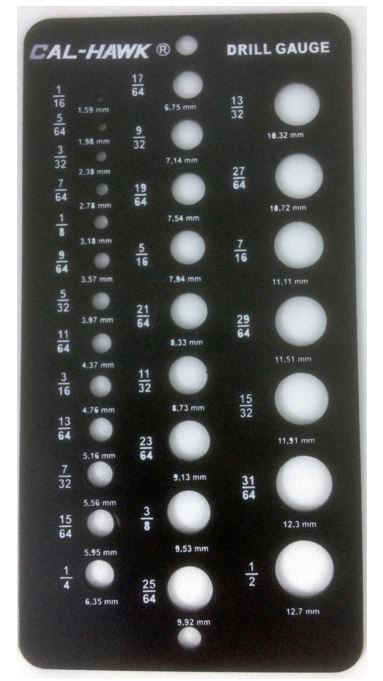| I had an old drill index that was a pain in the neck. It held the drill ok, but the sizes were stamped into the metal and then it was painted/powder coated. After a few days/month of dust covering it, the numbers were nearly impossible to read. This pic is with some of the dust wiped off. I'd usually have to carry the index outside and get at just the right angle to read them... even then it was hard. We're doing body work in the shop right now and dust is abundant. Normally it's like an operating room (yea right). |
|
With about 30 bits inserted, it was impossible to clean so you could read the numbers stamped in the metal. Add in 60+ year old eyes and you see the problem (or maybe not see). I started thinking about better ways to hold the drill bits and be able to see the sizes.... first thought was to make one, drilling each hole and labeling them. Well, after a minute, that didn't appeal to me with all the bit changes.... so I headed to Google. Most stands/indexes have three panels. Top to show the sizes, middle to hold them vertical and bottom to keep them from falling through.. Searched Google for a while and found these 3 for 8 bucks.
|
|
| Nice bright readable numbers on a dark background...(even metric !) so I bought them and waited for the mailman. When they arrived I started assembling the stand. I clamped them together and drilled a hole in each corner for the standoff bolts. Then using a piece of 12 ga. sheet metal for the base, I stacked the gauges on the bolts with nuts between them to position them properly. You could also use short sections of tubing for standoffs if you wanted instead of nuts... but nuts are quicker and easier to adjust. My bottom plate was bent at the proper angle to mount the stand at an angle next to the drill press.. the picture below shows the finished product.. Easy to see in low light and very sturdy. Works for me ! |
|
|


